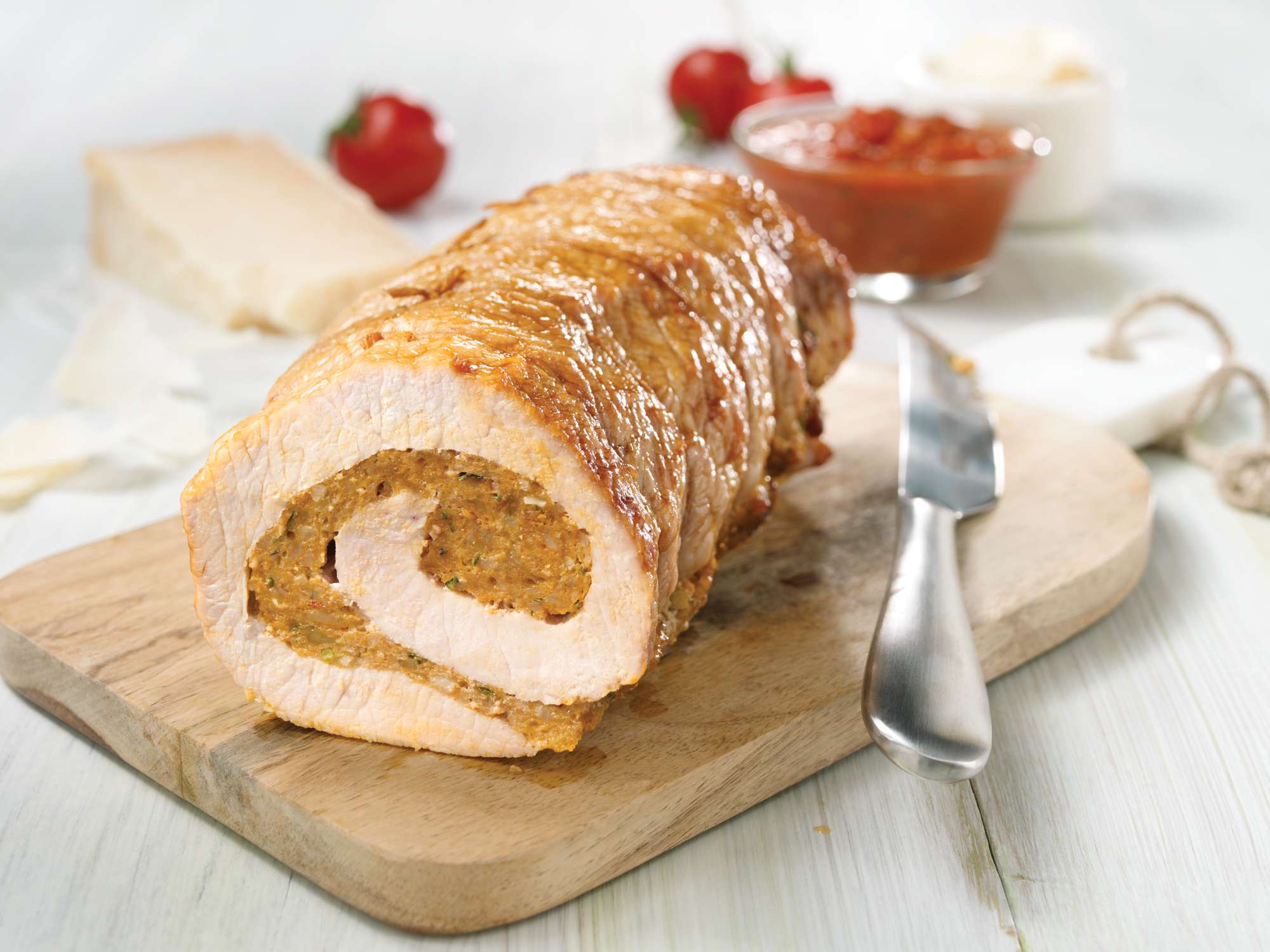Be the roasting and braising master you always wanted to be!
Oven roasting looks simple, but if you want a tender, flavourful piece of meat, you have to follow a few basic rules.
We’ve put together this handy guide to answer all your questions on the subject.
Roasts
Possible cuts:
- Outside round
- Sirloin tip
- Rack
- Loin
- Filet
In a drizzle of oil over moderately high heat, lightly brown the meat on all sides. Season to taste. Place meat in a roasting pan on a bed of mirepoix (coarsely chopped onions, carrots and celery) inserting a meat thermometer into the thickest section (avoid bones and fat). Roast uncovered at 160°C/325°F (190°C/375°F for filet) until thermometer reads 70°C/160°F (20 – 30 min./500 g/lb). Remove from oven, cover and let rest 10 to 15 minutes so fibres relax and juices redistribute themselves evenly throughout the meat instead of running out when you first cut into the roast.
Braising
Possible cuts:
- Shoulder
- Picnic
- Rump
- Slices of inside round
- Sirloin
In a drizzle of oil over moderate heat, lightly brown the meat on all sides. Season to taste. Add 250 to 500 ml (1-2 cups) bouillon and/or wine and mirepoix (coarsely chopped onions, carrots and celery). Cover and let simmer over low heat or cook in oven at 160°C/325°F for 45 to 55 min./500 g/lb.
Smaller cuts
Cutlets
- Strips
- Chops
- Tournedos
- Medallions
- Filet mignon
- Brochettes/Kebabs
- Burgers
- Tenderized slices
Season or marinate the meat (salt after cooking). Brown in a bit of oil or grill under the broiler on a broiler tray at medium heat. Cook 2 to 5 minutes for cutlets, medallions, filet mignon and strips and 6 to12 minutes for chops, brochettes and tournedos, according to thickness. Turn once or twice during cooking. For perfect doneness, a meat thermometer inserted in the thickest part of the meat should read 70°C/158°F.
As for burgers or tenderized slices, you need to make sure they are well done. Check for doneness by inserting a meat thermometer into the thickest part of the meat, which should read 74°C/167°F.
Barbecuing
Meat exposed to the high temperatures of a backyard grill builds up pressure inside. If you prick it or cut into it while it’s on the grill it will lose all its delicious juices. Use tongs to turn meat and let it rest a few minutes before slicing.
Barbecued brochettes
To make brochettes from a large piece of meat, cutting cubes of equal size ensures even cooking and helps the meat stay put on the skewer.
Soak the skewers in water for about 30 minutes to keep them from burning. Oil them before skewering the cubes of pork, which makes pulling off the meat much easier.
For a tender product, cover and let the brochettes rest for 1 or 2 minutes before serving.
Advice on marinades
Let pork marinate for 2 to 12 hours, at most. More than that and the marinade will start toughening the meat.
If you would like to serve the marinade in which raw pork was soaking, be sure to boil it for 3 minutes to avoid contaminating the cooked meat.
For more recipes including Italian sausage brochettes* or filet or loin or pork, click here!
*Only available in Quebec.
